Om te weten welke hardware er zit in uw computer dient u de computer specificaties op te zoeken. Omdat we tegenwoordig steeds meer een kant-en-klare computer kopen, is het niet altijd precies duidelijk welke hardware er in de computer is geplaatst.
In Windows 11 als in Windows 10 kunt u op verschillende manieren opzoeken welke hardware er is geplaatst en over wat voor functies deze hardware beschikt.
Zo kunt u op zoeken wat voor processor er in uw PC zit, wat voor opslag er is geplaatst en over welke videokaart uw PC of laptop beschikt.
Meld u dan aan voor onze nieuwsbrief.
Het weten welke hardware er is geplaatst heeft als voordeel dat u precies weet of uw PC of laptop geschikt is voor specifieke software of een computer spel. Mocht u ooit de hardware willen vervangen dan is het ook belangrijk dat u weet van welke fabrikant de hardware afkomstig is om een nieuwer model te kunnen aanschaffen.
Zoals aangegeven kunt u in Windows op verschillende manieren op zoeken over welke specificaties uw computer beschikt. Dit is hoe het werkt.
Computer specificaties bekijken in Windows 11 of Windows 10
Computer specificaties bekijken via Msinfo32
De meest overzichtelijke manier om een compleet overzicht te krijgen van welke hardware er in uw computer zit is via msinfo32. Klik met de rechtermuisknop op de Startknop. In het menu klik op uitvoeren.
In het uitvoeren venster type: msinfo32.exe
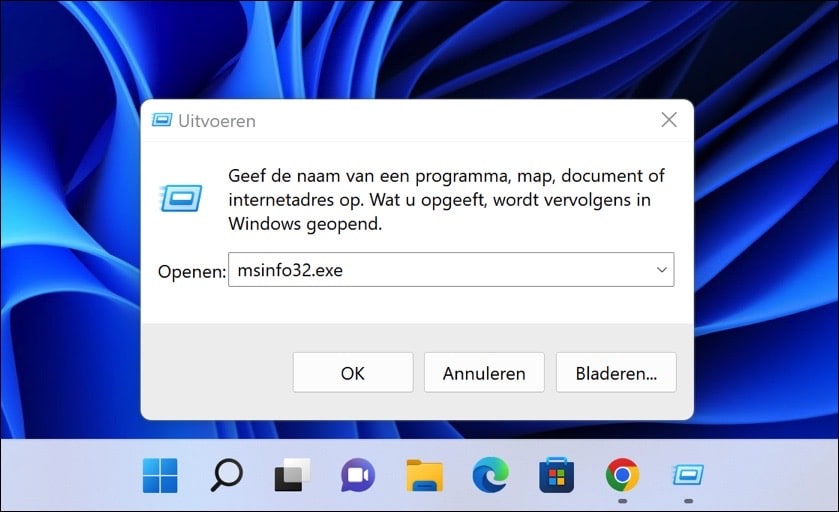
Er wordt nu een venster geopend met informatie over hardware onderdelen in uw PC. Dit is samengevat in het onderdeel “Systeemoverzicht”.
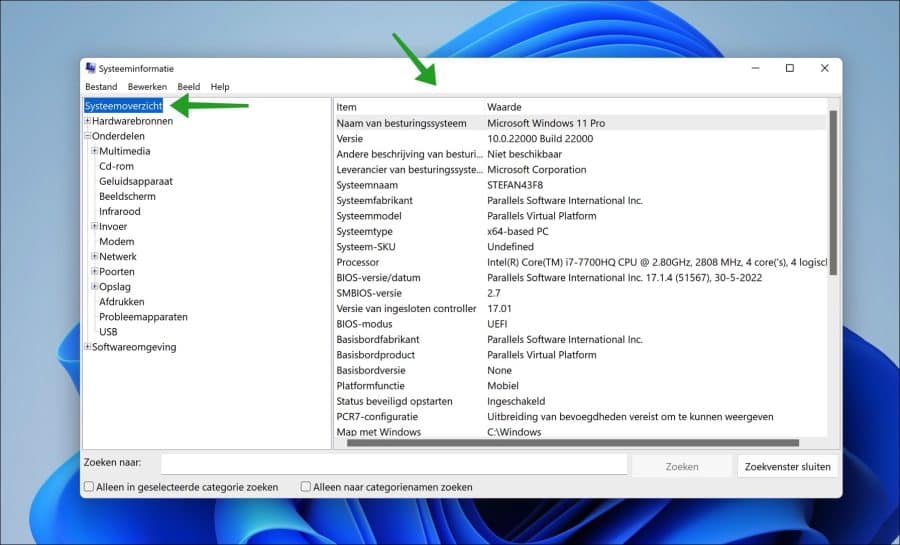
U kunt ook per categorie specifieker bekijken om wat onderdelen en versies het gaat. Dit kunt doen door “Onderdelen” open te klikken en daar het onderdeel te selecteren waarvan u meer informatie wenst.
U ziet dan specifieke waardes van het onderdeel wat u heeft geselecteerd.
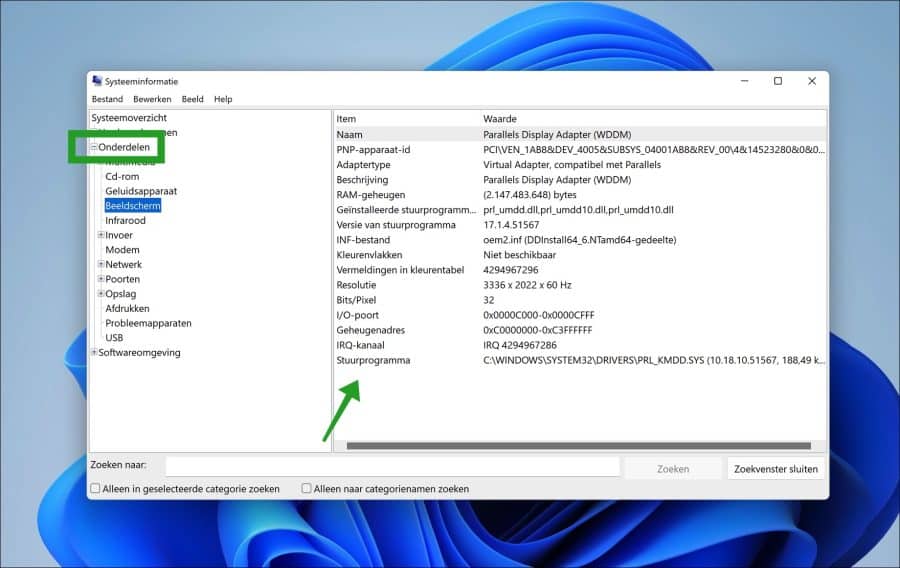
Niet alleen kunt u via systeeminformatie gegevens opvragen over aanwezige hardware, maar ook over software. De subcategorie “Softwareomgeving” biedt inzicht over verschillende software onderdelen in Windows.
Hier ziet u bijvoorbeeld de gekoppelde netwerkverbindingen, de actieve taken, services, foutrapportages, opstartprogramma’s en meer.
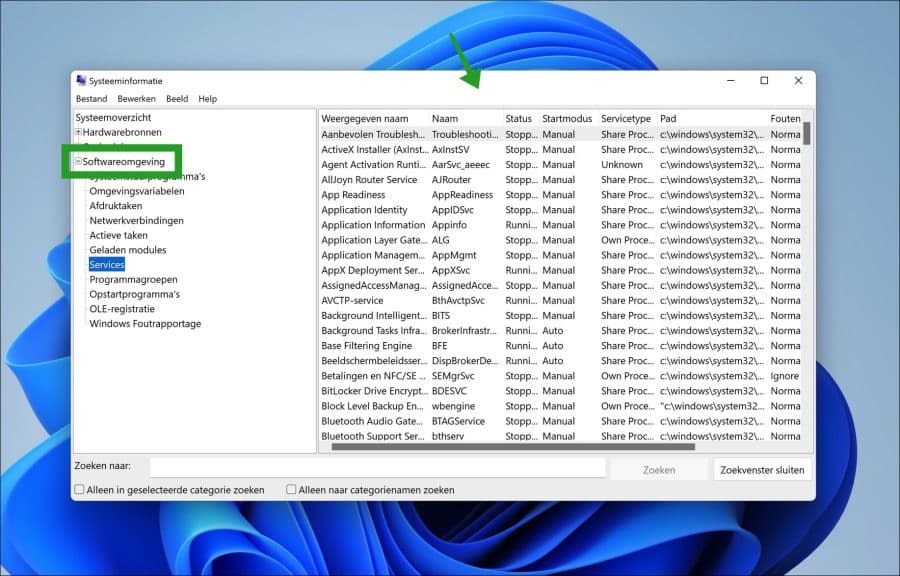
Computer specificaties bekijken via apparaatspecificaties
Een minder geavanceerd overzicht met apparaatspecificaties kunt u opvragen via de systeem instellingen in Windows.
Open het Start menu en klik op Instellingen. Klik vervolgens op Systeem en daarna op “Info”. Open nu de apparaatspecificaties.
In de apparaatspecificaties ziet u direct in een overzicht, apparaatnaam, de soort en snelheid van de processor en het geïnstalleerd RAM geheugen.
Als u onderin klikt op “Windows-specificaties” dan ziet u de Windows-editie, de Windows-versie, de installatiedatum van Windows en het “feature pack” buildnummer.
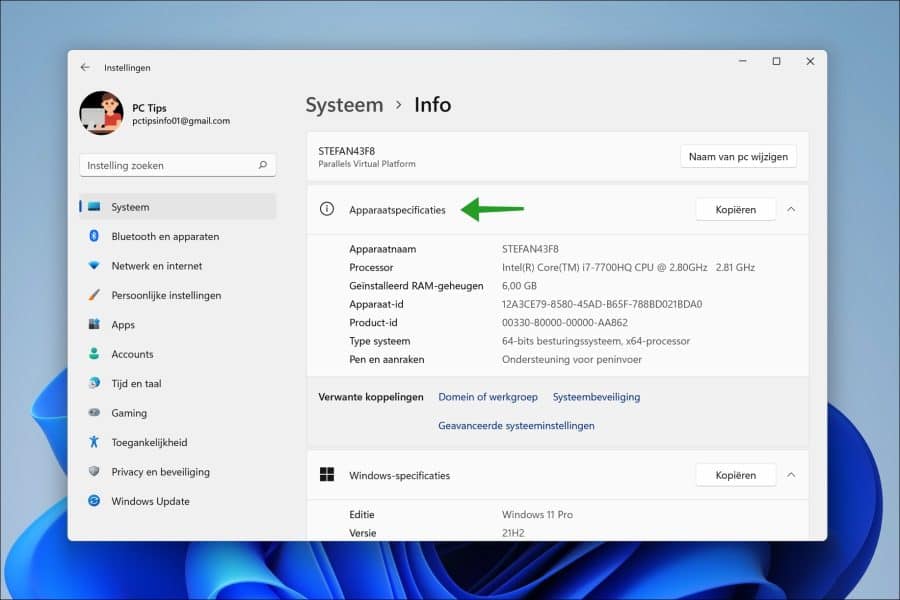
Lees dit artikel om meer informatie over DirectX te verkrijgen.
Computer specificaties bekijken via Schijfbeheer
Schijfbeheer is een onderdeel van Windows waar u een schijf zoals een harde schijf of een SSD mee kunt beheren. U kunt er partities mee aanmaken of beheren zoals de herstelpartitie en de systeempartitie. Ook kunt u er informatie mee opvragen over een schijf “volume”, een schijf activeren of uitschakelen en meer.
Om te beginnen open Schijfbeheer. Selecteer het volume waarvan u meer wilt weten. U ziet direct de verschillende partities op de schijf, het type en het bestandssysteem. Ook ziet u de totale capaciteit en de totale vrije ruimte in data en in procenten.
Als u met de rechtermuisknop op het volume klikt, en daarna op eigenschappen dan krijgt u van het volume een nog gedetailleerd overzicht van het volume en de instellingen die zijn toegepast op dit volume. Denk hierbij aan; is het volume gedeeld en hoe is de gebruikers beveiliging ingesteld.
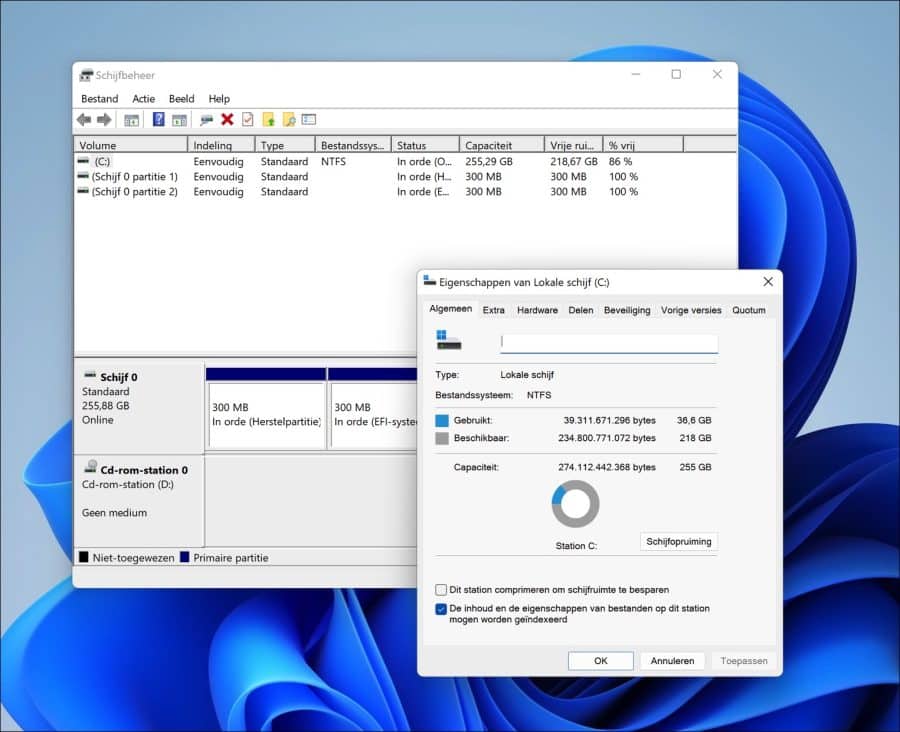
Computer specificaties bekijken via systeminfo
Als u alleen toegang heeft tot het Opdrachtprompt of Windows Terminal dan kunt u de computerinformatie opvragen via het “systeminfo” commando.
Open een Terminal of Opdrachtprompt venster. In het venster type: systeminfo. U ziet direct een uitvoer van de meest belangrijke computerinformatie.
U ziet bijvoorbeeld de installatiedatum van Windows. Ook kunt u via de system boot time achterhalen hoelang uw PC al aanstaat en de BIOS versie.
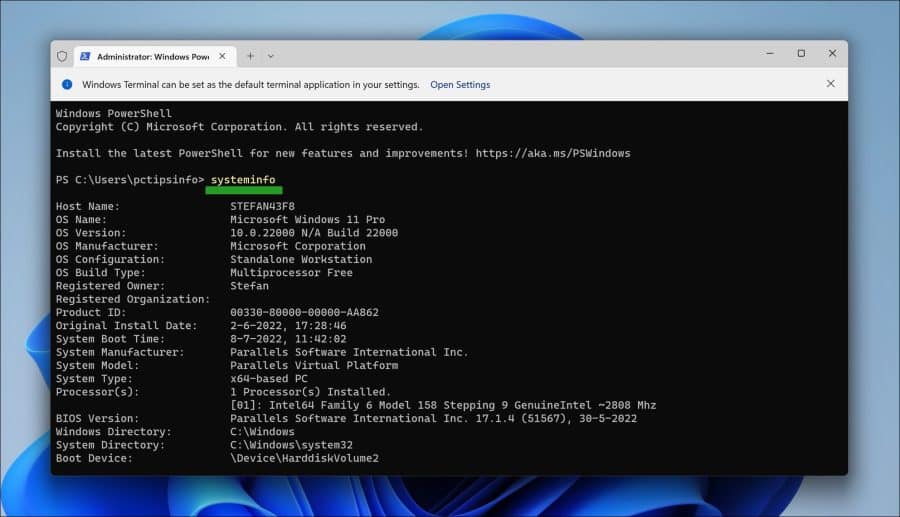
Ik hoop dat deze informatie heeft geholpen om een beter inzicht te krijgen in de opties om computer informatie op te zoeken in Windows. Bedankt voor het lezen!
Lees ook: 4 manieren om een Windows 11, Windows 10 of Office licentie op te zoeken.


Help mee
Mijn computertips zijn gratis en bedoeld om andere mensen te helpen. Door deze pc-tip te delen op een website of social media, helpt u mij meer mensen te bereiken.Overzicht met computertips
Bekijk ook mijn uitgebreide overzicht met praktische computertips, overzichtelijk gesorteerd per categorie.Computerhulp nodig?
Loopt u vast met uw pc, laptop of software? Stel uw vraag op ons computerforum en krijg gratis computerhulp van ervaren leden en experts.